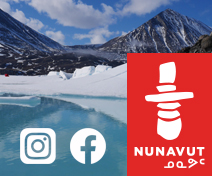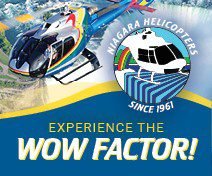ALBERTA

Alpine Vistas, City Sojourns
and Rural Retreats
By Susan Mate
The birthplace of the nation’s Wild West cowboy culture, Alberta is blessed with abundant wildlife, jaw-dropping scenery and must-do adventures that run right through all four seasons. Check out trail rides in the Rockies, guided ice walks through frozen waterfalls or horse-and-buggy tours through historic towns.
Seize the chance to engage with the First Nations Peoples and watch the fancy footwork and rhythmic jangles of the dancers competing at a powwow or performing at one of the heritage sites and festivals.
The awe-inspiring peaks of the Rocky Mountains enthrall visitors to the province’s west, while massive ranches and parklands beckon to the east. The northern boreal forests offer secluded hiking, paddling and birdwatching, while the Canadian Badlands lure visitors with its lunar-like landscape and vast dinosaur bone beds.
Urban escape artists flock to Alberta’s two largest cosmopolitan cities, Edmonton and Calgary, for retail therapy, gourmet dining, and shopping at North America’s largest shopping and entertainment complex, West Edmonton Mall. Smaller cities, including Red Deer, Grande Prairie, Fort McMurray, Medicine Hat, Lethbridge and Airdrie, serve as important regional hubs for shopping, government, tourism and agriculture/industry.
The annual Calgary Stampede celebrates all things cowboy and rodeo early each July. Edmonton’s K-Days follows up with a tribute to northern Alberta’s Klondike heritage, while dozens of other festivals across the province celebrate Alberta’s unique pockets of regional pride—think perogies in Vegreville, or beef jerky in Longview.
Nature’s Wonderland
Alberta has incredible national and provincial parks across the province. Spread across 661,848 sq. km (255,541 sq. mi.) of pristine terrain, the five major snow resorts and sprawling backcountry lure powder-hounds from November to May. Try dogsledding through the untouched Spray Lakes valley, or lace up your skates and make figure eights on Lake Abraham, home to only the clearest ice skating in Alberta. The lakes of Kananaskis Country are a delight for ice fishing in winter and boating, hiking and cycling in the summer. The 4,645-sq. m (50,000-sq. ft.) Kananaskis Nordic Spa includes outdoor hot, warm and cold pools.
Alberta’s glacier-fed waterways, particularly the Bow and Red Deer rivers, attract anglers with the promise of top-notch trout fishing. In the same day, visitors can play the back nine of a world-class golf course, hopscotch past cactus patches in search of ancient rock carvings in the desert, and then retire to the hotel hot tub to watch the sunset.
Venturing Out
Float your boat down a river or head for calmer waters along Lake Minnewanka or Moraine Lake in Banff National Park. Bonus: hear the crack of avalanches overhead, well out of your path but still powerful. Chase champagne powder from the top of first-rate resorts such as Sunshine Village, Lake Louise or Marmot Basin, or explore them in summer to unveil abundant wildlife and colourful carpets of wildflowers. Canada Olympic Park in northwest Calgary offers a variety of winter and summer activities including: mountain biking, skiing, hockey, outdoor camps, skating and sports training, while Peter Lougheed Provincial Park boasts unparalleled opportunities for adventure all year round.
Travellers with time on their hands head north to Wood Buffalo National Park, a UNESCO World Heritage Site with 44,807 sq. km (17,300 sq. mi.) of protected wilderness where the endangered whooping crane and the world’s largest herd of free-roaming wood bison can be found.
What’s New?
Discover a new dimension of alpine luxury at BASIN Glacial Waters, Fairmont Chateau Lake Louise’s stunning new thermal spa, opening summer 2025. Seamlessly integrated into the natural landscape, this indoor-outdoor sanctuary offers breathtaking mountain views, infinity pools, and immersive wellness rituals—redefining relaxation in the heart of the Canadian Rockies (www.thebasin.com).
In the heart of Edmonton, the Indigenous Art Park introduces new installations in 2025, featuring contemporary works by Indigenous artists. These vibrant pieces, set within the city’s natural landscapes, celebrate Indigenous stories and perspectives. Visitors can experience a fusion of art and nature.
Explore Banff on a guided bike tour with Bikescape. The area features some of Canada’s most scenic trails. The tours cater to all abilities and ages (www.bikescape.ca).
Experience the grit and glory of Stampede’s greatest stories at Sam Centre. This new year-round attraction brings the Stampede story to life via interactive exhibits and digital experiences. (www.samcentre.calgarystampede.com).
City Lights
Alberta’s two major cities offer quite different insights into the province, though they share a love of green space, sprawling river pathways and tidy, bustling downtowns.
The provincial capital of Edmonton is a government city with a grand legislature building, a thriving arts community and numerous galleries, craft stores and art shops. Most can be found along trendy Whyte Avenue or downtown. In the Arts District, find the modern Art Gallery of Alberta, the Winspear Centre and the Citadel Theatre. Also in this locale is the stunning Royal Alberta Museum, the largest museum in western Canada (www.royalalbertamuseum.ca). The meandering North Saskatchewan River cuts a steep swath through the city north of downtown and can be explored by canoe or raft (www.edmontoncanoe.ca).
The “Festival City” boasts more than 90 events a year. Its long winters are cause for several events including Silver Skate winter festival in February. Summer offerings include the Fringe Theatre Festival, the Folk Music Festival, K-Days and Heritage Festival. Located on the North Saskatchewan River, Fort Edmonton Park offers a look at the historic 1886 fort, leading to the 1920s at a new midway and exhibition (www.exploreedmonton.com).
Calgary’s office towers, which contain the majority of Canada’s oil and gas company headquarters, were built to showcase the Rockies on the western horizon. Nearby Chinatown segues to the Bow River pathway and the redevelopment of the East Village neighbourhood has revitalized this historic section of east downtown. The Alt Hotel East Village, and the restaurants and shops in the Simmons Building, are two highlights of the area.
The city has preserved much of the sandstone buildings along Stephen Avenue Walk, where many great restaurants and shops are found, along with the Olympic Plaza and the Calgary Tower. Numerous retail stores and eateries are also part of The CORE Shopping Centre (www.visitcalgary.com). The architecturally striking Calgary Central Library is adjacent to the popular Studio Bell National Music Centre, east of downtown’s office towers. The library’s features include a public art exhibit, a performance hall, community meeting spaces, Indigenous Place Making and early learning centres (www.calgarylibrary.ca).
Residents are devout nature lovers, flocking to the city’s network of river pathways as well as the inner city Prince’s Island Park, Inglewood Bird Sanctuary, and Bowness Park and its pretty lagoon, where families can skate in winter and canoe and paddleboat in summer.
The Great Outdoors
Head for the hills from summer to fall for a guided multi-day backcountry pack trip on horseback. Sleep under the stars and listen to coyotes howl in a riverside tent camp in Dinosaur Provincial Park, home to some of the planet’s largest fossil beds and fantastic interpretive programs. Or scramble up the Via Ferrata (Italian for iron path), a rope and cable-assisted mountain journey at Mt. Norquay near Banff. Should winter be your season, abundant ice-climbing, skiing, fishing, snowshoeing and ATV journeys can be found across the province.
Explore the snow-caked Spray Lakes valley on dogsled. Drive the winter ice road to Fort Chipewyan, Alberta’s oldest First Nations community north of Fort McMurray, or photograph wildflowers among the alpine lakes at Sunshine Village resort west of Banff or the Plain of Six Glaciers trail near Lake Louise.
Heritage And Culture
The province’s history is just over a century old, but the First Nations heritage dates to prehistoric times. Métis Crossing, northeast of Edmonton, offers a taste of the musical culture created by the melding of First Nations Peoples with European settlers in the 19th century. Fort Edmonton tells of the city’s Gold Rush era, when these same voyageurs paved the way for the fur trade. Calgary’s Heritage Park Historical Village overlooks the calm waters of the Glenmore Reservoir—where dragon boat racing and other water sports are held. History is also chronicled at Head-Smashed-In Buffalo Jump, one of the UNESCO sites in Alberta, or Blackfoot Crossing—a modern interpretive centre built into the Bow River bluffs east of Calgary.
Explore transportation history at the Remington Carriage Museum at Cardston or head north to the town of Wembley—24 km (15 mi.) west of Grande Prairie—to tour the Philip J. Currie Dinosaur Museum, which chronicles the work done to preserve the world’s largest hornbill dinosaur bonebed.
Must See, Must Do
Pilot to Bombardier! Hop aboard an open-air biplane at Reynolds-Alberta Museum for a bird’s-eye view of the prairies around Camrose and Wetaskiwin. You can also tour the museum’s many heritage transportation vehicles such as cars, industrial machines and airplanes (www.reynoldsmuseum.ca).
Nestled into the lush coulees of the Rosebud River Valley, the abandoned railway town of Rosebud was overtaken by a group of faith-based artists three decades ago. They created a thriving professional theatre school and arts centre that offers high-calibre, family-friendly theatre and music. Many tourists stroll along the hamlet’s two streets, which are spattered with funky art shops and galleries (www.rosebudtheatre.com).
Historic Fort Macleod, in southern Alberta, is the birthplace of the North-West Mounted Police—now the RCMP. The first musical ride in Canada was held in the town in 1876. Modelled after British Army cavalry drills, the musical ride is held daily in July and August (www.nwmpmuseum.com).
Scenic Drives
Crowsnest Highway: This historic route stretches from Fort Macleod in the province’s far south to the town of Coleman, where the province’s coal-mining heritage was born. Travellers should not miss the jaw-dropping boulder fields lining the highway to the town of Frank, where 82 million metric tonnes of rock crashed down from the mines at Turtle Mountain and buried the town. A visit to the Frank Slide Interpretive Centre tells the story of the nighttime tragedy.
Deh Cho Trail: The best of northern Alberta is found along this journey northwest of Edmonton to High Level. It offers vast tracts of stunning wilderness with countless lakes and rivers; the boreal forests, parkland and wetlands are teeming with wildlife including rare birds. Explore old fur trade posts at historic sites such as Fort Vermilion, or cross Alberta’s longest vehicle suspension bridge over the Peace River at Dunvegan.
Cowboy Trail: Western heritage takes the spotlight along this scenic Highway 22 drive through the foothills of the Rockies between Pincher Creek and Mayerthorpe. Highlights of the route include Bar U Ranch National Historic Site and historic Cochrane RancheHouse (www.thecowboytrail.com).
Family Fun
Don’t miss the World Waterpark at West Edmonton Mall, the Calgary Zoo’s Penguin Plunge or The Brainasium outdoor playground at the TELUS Spark Science Centre. Kids enjoy the Tropical Pyramid at the Muttart Conservatory. The Great Canadian Barn Dance at Hillspring features campfires, music and food (www.gcbd.ca), while the Innisfail Discovery Wildlife Park is a 36 ha (90 acre) zoo housing more than 30 species of orphaned animals including bears, wolves and lions (www.discoverywildlifepark.com). The Royal Tyrrell Museum offers a Jurassic joyride; also the chance to climb into the belly of the World’s Largest Dinosaur in Drumheller in the Canadian Badlands.





